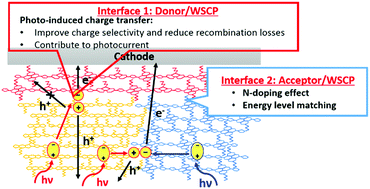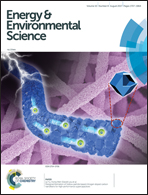Interface design for high-efficiency non-fullerene polymer solar cells†
Abstract
Non-fullerene polymer solar cells have attracted extensive attention due to their potential for overcoming the performance bottleneck currently encountered in fullerene-based photovoltaics. Herein, we report non-fullerene polymer solar cells with a maximal power conversion efficiency of over 11% by introducing an n-type water/alcohol soluble conjugated polymer as a cathode interlayer. We found that the contact between the n-type interlayer and the donor provides an extra interface for charge dissociation and the matching of energy levels between the n-type interlayer and the acceptor allows efficient electron extraction from the bulk heterojunction, which eventually leads to much improved performance. This study proposes a significant design rule for designing new interfaces for high performance non-fullerene photovoltaics.



 Please wait while we load your content...
Please wait while we load your content...